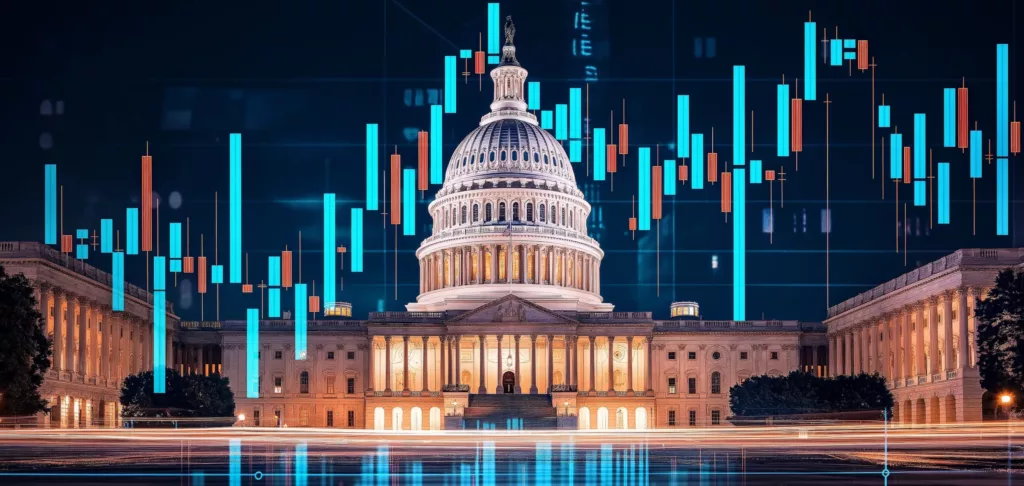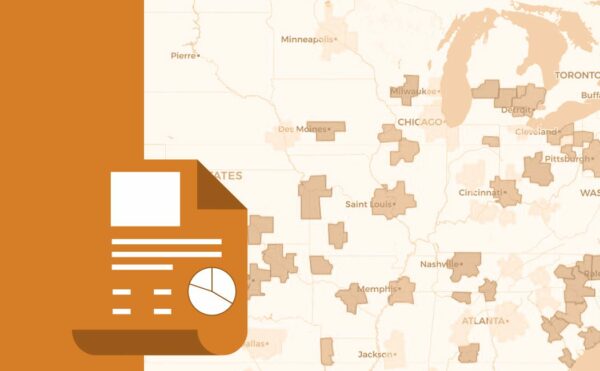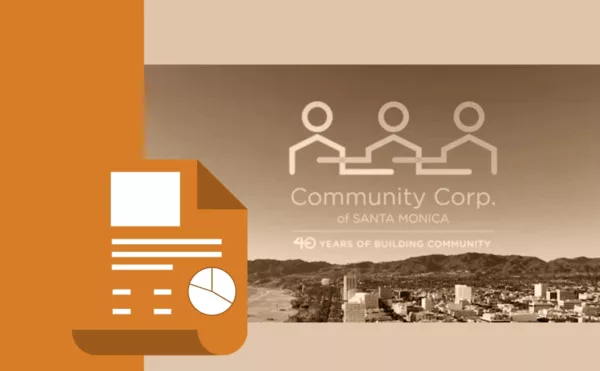
November 6, 2024
With Donald Trump’s election to the U.S. presidency on November 5, 2024, the U.S. real estate market faces significant potential shifts. Trump’s background in real estate and previous administration’s business friendly policies suggest that his new term could introduce notable changes across both commercial and residential property sectors, potentially even a return to less regulation. As of this writing a Republican Senate and potentially (although still not decided) House might clear the path for this.
But real estate professionals need to assess how Trump’s proposed economic and housing policies might shape the market—both to seize emerging opportunities and to mitigate potential risks. Tariffs and immigration policy changes present the risk of returning to rapid price growth, which could make new investment difficult.
Opportunities:
- Tax Cuts and Regulatory Easing: Potential short-term stimulus for commercial real estate as tax cuts and reduced regulations might encourage business expansion and investments.
- High-End Real Estate Demand: Potential tax breaks favoring high-income individuals may drive demand for upscale and luxury properties, leading to higher activity in exclusive markets.
- Opportunity Zone Program Renewal: A renewed program similar to his first term could attract significant private capital, boosting commercial interest in underserved neighborhoods.
- Pause in Regulatory Momentum: Some regulatory initiatives, such as rent control, are unlikely to be on the Federal agenda.
Challenges:
- Tariff-Driven Inflation and Higher Interest Rates: Proposed tariffs on imports, especially a 60% tariff on Chinese goods, could increase construction costs, driving up prices on housing and commercial projects. Tariff-induced inflation may lead the Federal Reserve to raise interest rates, further impacting new home affordability.
- Federal Deficit and Inflation Risks: High federal spending combined with tax cuts could grow the deficit, putting additional upward pressure on interest rates. Inflation, would increase costs for construction materials, labor, and mortgage rates, dampening real estate demand.
- Labor Shortages Due to Stricter Immigration Policies: Tighter immigration may reduce the labor pool for construction, increasing wage pressures and project costs. Additionally, a lower influx of immigrants could reduce demand for rental housing in major cities.
- Affordable Housing Challenges: Rising construction costs and mortgage rates will continue to complicate affordable housing development Further, the new administration is not likely to take up the push for supporting increased housing production as Demographic talking points considered.
Economic Policies and Real Estate Demand
The U.S. economy remains the primary driver of real estate demand and is therefore where we focus much of this assessment. Trump’s proposed economic policies—including tariffs, tax cuts, and stricter immigration—are expected to have a broad impact on the U.S. economy, which will, in turn, affect the real estate market. Trump has suggested a 10% universal tariff on imports and a 60% tariff specifically on Chinese goods. These tariffs could raise consumer prices and construction costs, directly impacting housing affordability. The tariffs’ direct impact on construction is substantial: higher costs for imported materials like steel and lumber would raise real estate development expenses.
Goldman Sachs estimates that these tariffs could reduce GDP growth by 0.5 percentage points by mid-2025, potentially slowing commercial real estate development in economically sensitive sectors such as manufacturing and retail. The inflationary pressure from tariffs could once again prompt the Federal Reserve to adopt a more hawkish stance, potentially increasing interest rates. While Trump’s tax cuts might provide short-term economic stimulus, economists expect his immigration policies and additional trade restrictions could dampen consumer spending and business investment.
Balancing Tax Cuts and Economic Challenges
Trump’s tax cuts and regulatory easing could stimulate commercial real estate. However, the benefits may be temporary or offset by economic drawbacks from other policies, including rising tariffs and immigration limits. Economists remain divided on the potential for inflation during Trump’s term. Some anticipate that a combination of tax cuts and increased federal spending may drive inflation up significantly. Rising inflation would raise costs for construction, labor, and mortgage rates, dampening demand for new homes. Meanwhile, 68% of economists surveyed by the Wall Street Journal expect Trump’s policies to increase the federal deficit, which could place upward pressure on interest rates as federal borrowing grows.
Labor and Housing Market Impacts of Immigration Policy
Stricter immigration policies may affect real estate both directly and indirectly. Reduced immigration could shrink the labor pool for construction, pushing up wages and limiting workforce availability, which would increase project costs. Additionally, fewer immigrants would lower demand for rental housing, particularly in urban areas that traditionally attract new arrivals.
Opportunity Zones 2.0?
Given Trump’s real estate experience, he may favor policies that support property development and investment. During his first term, he introduced the Opportunity Zone program to attract investment in economically distressed areas through tax incentives. While investor enthusiasm has waned due to inflation, high interest rates, and tax benefit expirations in 2026, Trump could renew or expand the program. An updated approach to Opportunity Zones could attract significant capital to underdeveloped areas, boosting local property values and fostering commercial interest. Nonetheless, the program has faced criticism over insufficient oversight and reporting requirements, which complicates efforts to assess its community impact.
Trump has previously promoted ambitious infrastructure projects, though these remained largely aspirational. Should he revive this focus and push for substantial federal infrastructure investments similar to those under Biden’s Bipartisan Infrastructure Investment and Jobs Act, real estate markets could see a boost, especially in regions where development aligns with infrastructure improvements. However, federal-level progress in this area remains uncertain under Trump.
Luxury Real Estate and Affordable Housing
Potential tax breaks for high-income individuals could increase demand for luxury properties, as wealthy investors may pursue high-end real estate assets. If Trump’s tax policies favor high-net-worth individuals, luxury markets could experience a surge in activity.
Conversely, rising inflation and material costs could hinder affordable housing development. Higher mortgage rates, aimed at countering inflation, would continue to make homeownership more challenging for middle- and lower-income buyers, while propping up demand for rentals.
Conclusion: Navigating Trump’s Second Term
Trump’s potential influence on the real estate market is a mixed bag of potential influences. In Trump’s first term, the Tax Cuts and Jobs Act (TCJA) of 2017 temporarily boosted GDP growth, led to a short-term increase in corporate profits and spurred a rise in consumer spending and business investment. But this disproportionately benefited the wealthy and corporations, with only modest wage gains for most workers. Meanwhile the tax cuts substantially increased the federal deficit, raising concerns about long-term fiscal sustainability. This time around his policy’s influences on inflation, a growing federal deficit, and a tighter immigration policy could similarly lead to mixed results for the economy overall and real estate in particular, making adaptability essential for industry stakeholders.










